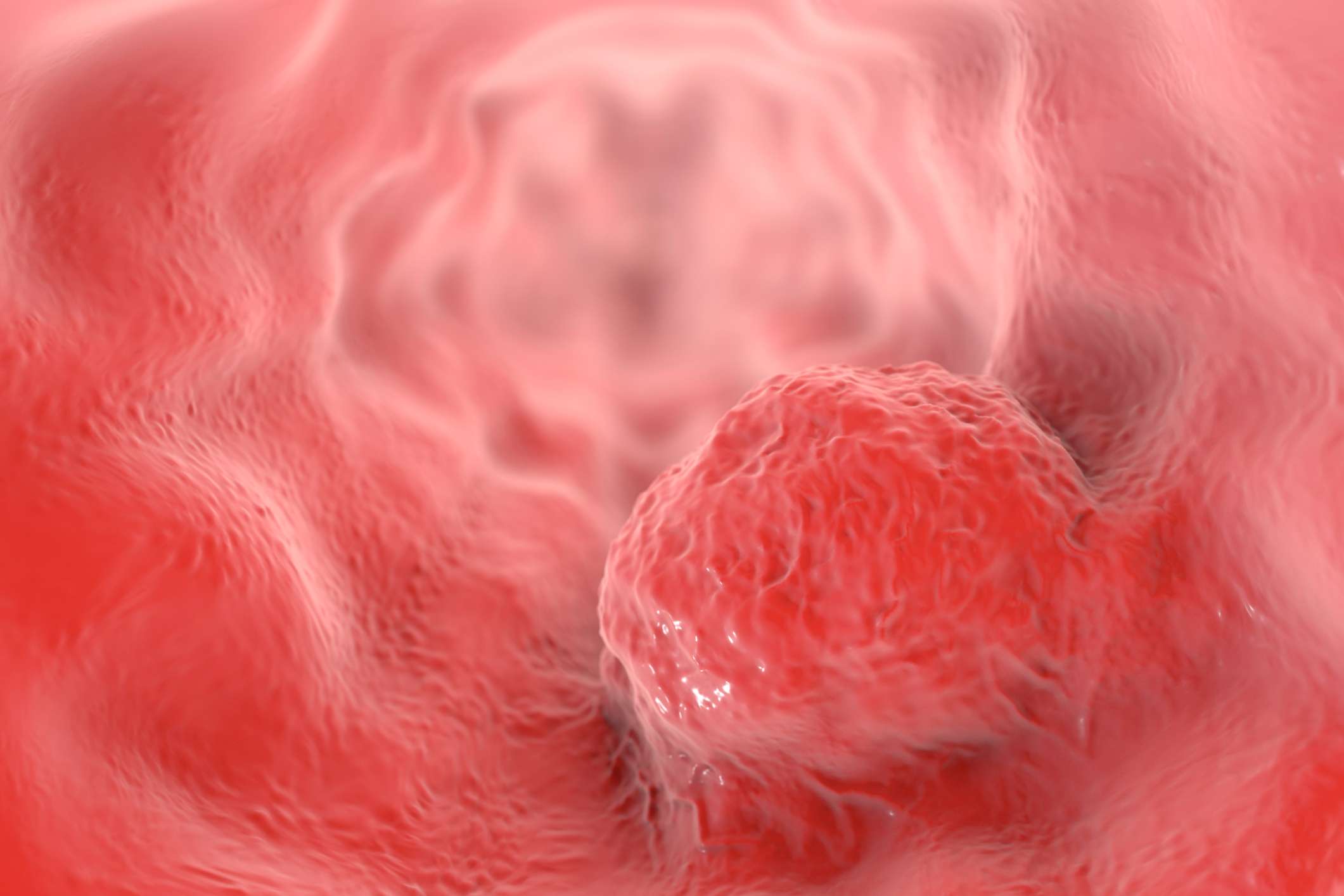Adenocarcinoma
Adenocarcinomas account for around 50 to 60 % of cases of esophageal cancer. They develop from the glandular mucosal cells in the lower section of the oesophagus and are becoming increasingly common in Western Europe. In over 90% of cases, they develop on the basis of precancerous lesions (so-called Barrett's esophagus). Barrett's oesophagus as a cylindrical cell metaplasia is the result of prolonged gastro-oesophageal reflux.
Risk factors for adenocarcinoma of the esophagus are
Adenocarcinomas in the lower oesophagus and in the area of the stomach entrance are nowadays referred to as AEG (adenocarcinomas of the oesophagogastric junction). They are classified according to Siewert (type I to III).
Squamous cell carcinoma
Squamous cell carcinomas are responsible for around 40 to 60 % of cases of esophageal cancer. The tumors usually occur in the middle third of the esophagus. They develop from the flat epithelial cells of the mucous membrane. Squamous cell carcinomas develop less frequently in the lower or upper third of the oesophagus. Physiological constrictions such as the aortic constriction are also frequent predilection sites for squamous cell carcinomas.
Risk factors for squamous cell carcinoma of the esophagus include
Alcohol abuse (especially high-proof alcohol)
smoking
nitrosamines
achalasia
Condition after radiotherapy in the area of the esophagus
Hot drinks
Squamous cell carcinoma in the head and neck area
Infection with human papillomavirus (HPV)
Stenosis after chemical burns
Around 75% of squamous cell carcinomas of the oesophagus are caused by exposure to nicotine and alcohol. The combination of alcohol and tobacco leads to a synergistic increase in the risk of developing the disease. For example, anyone who consumes 80 grams of alcohol a day (about 2 liters of beer or 4 glasses of wine) and also smokes 20 cigarettes has a greatly increased risk of developing squamous cell carcinoma of the esophagus.
Anatomy
The oesophagus is part of the upper digestive tract. It is an elastic, muscular tube about 25 centimetres long and transports ingested food from the mouth to the stomach. The upper part of the oesophagus lies behind the windpipe. In the lower part, it passes through the diaphragm and then opens into the stomach. The oesophagus consists of four different layers of tissue. On the inside there is a mucous membrane, then a layer of connective tissue, a layer of muscle and on the outside the oesophagus is again covered by a layer of connective tissue.
Wavelike contractions of the esophageal muscles move the chyme towards the stomach. At the end of the oesophagus there is a muscular closure device that is intended to prevent gastric acid and food residues from flowing back into the oesophagus (reflux). If this closure device does not function properly, aggressive stomach acid and bile acids can reflux and damage the oesophagus. This also causes the symptom of heartburn.
If there is an increased reflux from the stomach into the oesophagus, this can lead to inflammation of the oesophageal mucosa. The mucous membrane is then transformed from a squamous epithelium to a glandular epithelium. If heartburn occurs chronically, tumors can form in the mucous membrane due to the prolonged inflammation.
Tumor classification
Initially, every tumor, regardless of the tissue from which it originates, is limited to the uppermost layer of the oesophagus. As the tumor grows larger, it normally progressively invades deeper layers of the oesophagus, lymph nodes and then neighboring organs. Metastases from esophageal cancer occur primarily in the lymph nodes, liver and lungs. However, other organs can also be affected.
The degree of spread of the tumor is important for treatment planning and is divided into certain categories for oesophageal cancer according to the TNM scheme.
The following factors are important for this:
Deep infiltration of the tumor (T)
Involvement of the lymph nodes (N)
Presence of metastases (M)
The size and extent of the tumor is classified with the numbers T1 to T4. The number and location of the affected lymph nodes are described with the numbers N0 to N3. The presence or absence of metastases is designated as M0 or M1. An exact description of the TNM classification is often only possible after surgical removal of the tumor.
As with any tumor, esophageal cancer can also relapse (recurrence). This means that the cancer either recurs at the original site or affects another part of the body.



